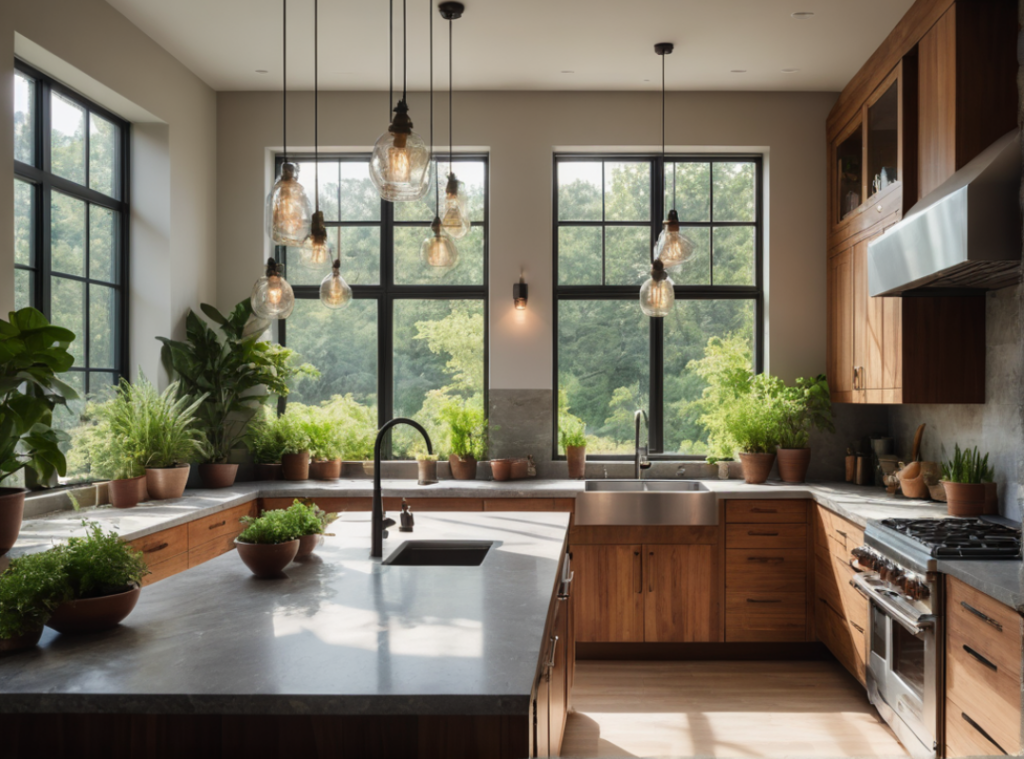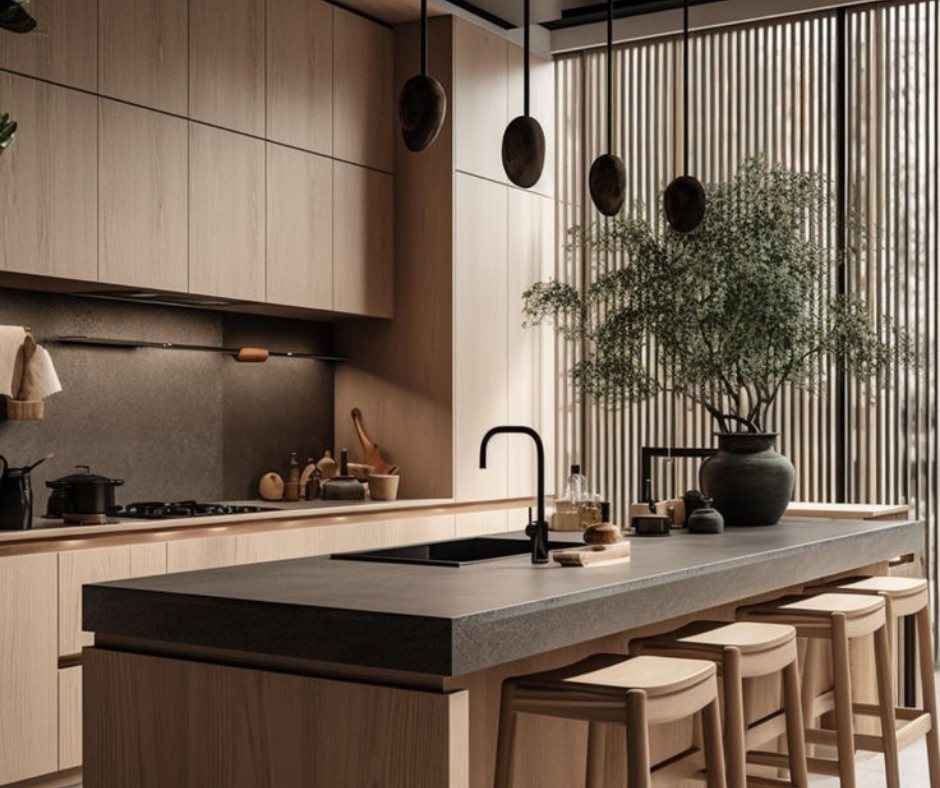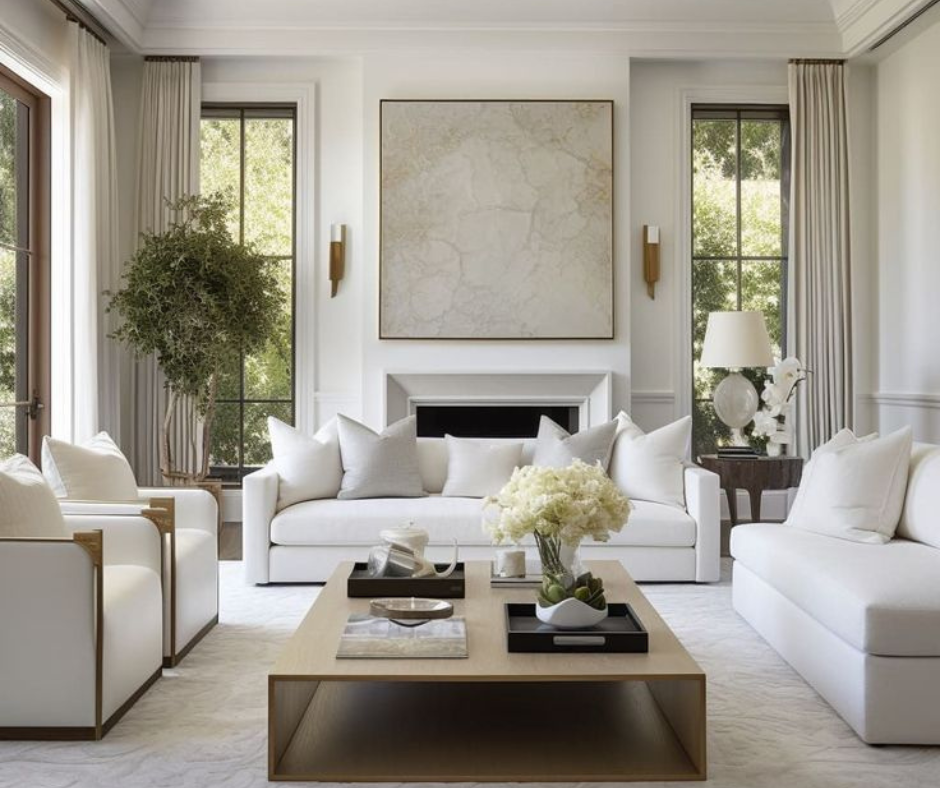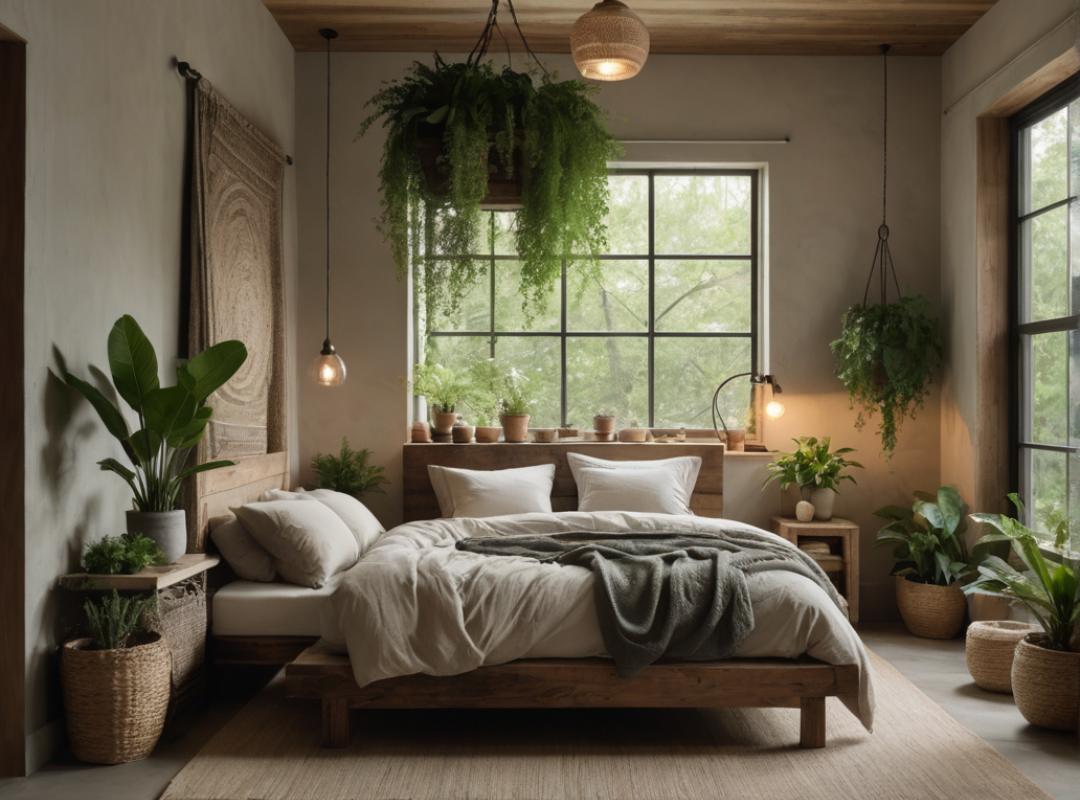Hey! I'm Megan.
Since 2009, I’ve been working in the interior design industry. I’ve interned for a hospitality design company, worked in various furniture and fabric showrooms, and been an interior designer for a design-build firm. I decided to hang out my shingle and launch m studio interior design in 2015. And now I get to do what I love best: Design homes that are totally customized to the clients I work with!
design talk
lifestyle
m studio Projects
travel
Have you ever stepped outside on a warm spring morning, inhale deeply and instantly feel better? That right there is the power of nature!! Now, imagine bringing that feeling into your home. By implementing elements that align with biophilic design, you can do just that—create a space that feels naturally inviting, refreshing, and good for your well-being. Spring is the perfect time to embrace nature indoors, transforming your home into a wellness retreat that enhances both your mood and your health.

What Is Biophilic Design and Why Does It Matter?
Biophilic design is all about strengthening the connection between humans and nature within our built environments. Studies have shown that natural elements indoors can boost mood, improve air quality, and even enhance productivity. Think of it as a way to bring the outdoors in—strategically using plants, natural materials, and sunlight to make your home feel fresher and more balanced.
This approach also aligns with the WELL Concept of Air & Materials, focusing on improving indoor air quality and incorporating non-toxic, sustainable materials to create a healthier living space. By making small design changes, you can reduce pollutants in your home and invite a breath of fresh air into your daily routine—literally!


Bring in the Greenery!
Nothing says “naturally inviting” like lush, thriving greenery. Plants don’t just look good—they actively improve air quality by filtering toxins and increasing oxygen levels. If you’re new to houseplants and biophilic design, start with easy-care options like snake plants, pothos, or peace lilies. These low-maintenance beauties purify the air while adding a refreshing, organic touch to your decor.
If you’re short on floor space, try hanging plants or vertical gardens. Wall-mounted planters can turn a blank wall into a living masterpiece. Plus, caring for plants has been shown to REDUCE STRESS—another reason to go green this season!!!
Not sure which plants to choose? This helpful guide on selecting indoor plants provides expert advice on finding the right leafy friends for your home’s unique light conditions and layout. With the right selection, you’ll have thriving greenery that enhances your space in no time.


Maximize that Natural Light!
Spring is all about sunshine, so let’s talk about maximizing natural light! Sunlight is one of the key elements of biophilic design, offering both aesthetic and health benefits. Exposure to natural light helps regulate your circadian rhythm (fascinating, right!?), improving sleep and boosting energy levels throughout the day… truly contributing to our overall wellbeing.
To brighten up your home, swap out heavy drapes for sheer curtains or light-filtering blinds. Position mirrors strategically to reflect sunlight into darker corners. If possible, consider larger windows or skylights to bring in even more of that beautiful, mood-lifting daylight.


Opt for Natural & Non-Toxic Materials
The materials you bring into your home have a big impact on indoor air quality and overall wellness. The WELL Concept of Materials emphasizes using sustainable, non-toxic options that are better for both you and the environment.
Opt for furniture made from solid wood, bamboo, or reclaimed materials rather than synthetic alternatives. Swap out plastic decor for woven baskets, stone accents, or clay pottery. Even small changes—like choosing organic cotton bedding or a wool area rug—can create a cozier, more natural space while reducing exposure to harmful chemicals.
Create a Calming, Nature-Inspired Atmosphere
One of the best things about biophilic design is how it enhances the way your home feels. The goal isn’t just to make it look nice—it’s about creating an environment that promotes relaxation and well-being. Start by incorporating a natural color palette with earthy greens, warm neutrals, and soft blues. These shades mimic nature and help foster a sense of calm.
Sound is another important factor of biophilic design. A small indoor fountain can introduce the soothing sound of running water, while nature-inspired playlists (think soft rain or rustling leaves) can transform your space into a peaceful retreat. Want to engage even more senses? Try essential oils like eucalyptus or lavender to infuse your home with fresh, earthy scents.



Biophilic Design to Your Home
Looking for more ways to incorporate biophilic design into your home? Check out this article “5 Biophilic Design Tips”. If you’re ready to refresh your home with biophilic design, we’d love to help! At m studio interior design, not only is Megan a WELL Accredited Professional, the team here specializes in creating wellness-focused interiors that seamlessly blend nature with comfort.
Let’s Chat Design! and work together to design a space that brings the outdoors in while enhancing your well-being.
Xoxo,
Megan
Did you enjoy the read, feeling inspired or have questions!? Feel free to leave a comment below!
Leave a Reply Cancel reply
© 2025 m studio interior design | Legal
client portal
contact
blog
design work
Work with us
meet megan
home
Join our Journey on Instagram
Sharing new projects, behind the scenes, progress photos and updates.
@megan_of_mstudio.id
Our Guide to Top Kitchen Trends
free resource
Wondering what this year's top kitchen trends will be? We're breaking it down for you in this FREE exclusive guide!
gimme gimme! >
press
Serving the Southern
California Coastline
Laguna Beach
San Clemente
Carlsbad
Encinitas
San Diego
Belmont Shore
Naples
Seal Beach
Huntington Harbor
Huntington Beach
